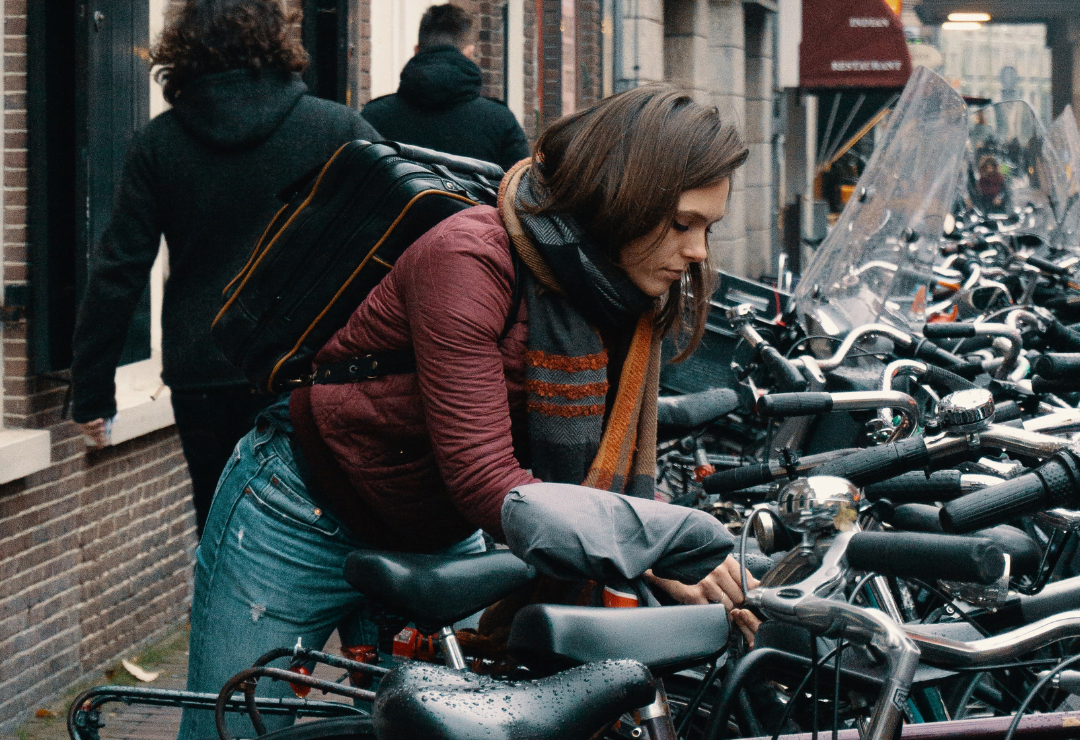Catch My Bike If You Can
The past five decades have seen an upsurge in cycling in Amsterdam. As more and more residents have traded four wheels in for two, however, another trend has emerged: bike theft. With the annual value of the stolen bicycle market as high as 600 million euros, stricter — and smarter — law enforcement is needed.
To listen to the recording of the article below, please accept all cookies.
Since the 1970s, when Amsterdam embraced a non-car-centric approach to urban development, cycling has witnessed remarkable growth, with the vast expanse of bicycles populating the urban landscape of the Dutch capital becoming an impressive and instantly recognisable sight: truly, it is no surprise that Amsterdam is often perceived as the ‘Cycling Capital of the World’. Bicycles have served as its primary mode of transport for decades and the city has long been a commendable example for many other urban areas embracing active mobility to increase the health and general liveability of their citizens and reduce air and noise pollution.
Yet, all that glitter is not gold, and Amsterdam still grapples with one particular, annoying, and inconvenient struggle: the exorbitant number of bike thefts.
Toward a systematic response
One of the significant challenges in addressing bicycle theft lies in the prevailing perception that it is a low priority for law enforcement, which means that it is not tackled with a systematic approach. Citizens, police, and other governmental agencies see bicycle theft as incidental – an isolated issue, really, making it difficult to see the bigger picture and broader scope of the problem.
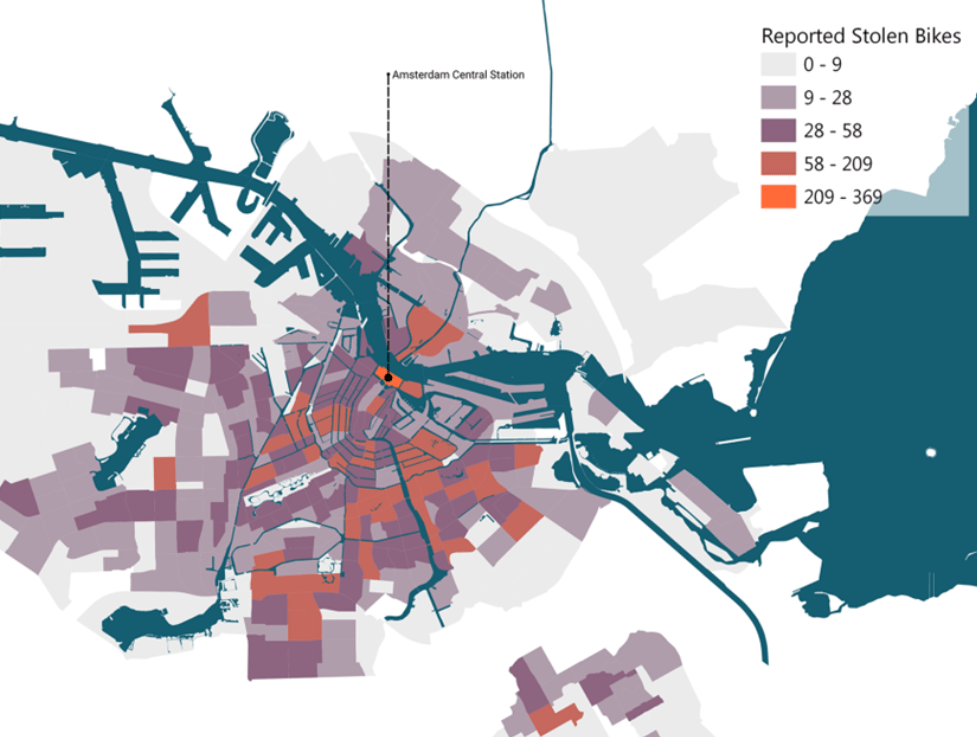
Reported bike thefts per neighbourhood in Amsterdam (2019)
Nevertheless, the issue holds societal relevance, as evidenced by the fact that in the Netherlands alone, the annual value of the stolen bicycle market is estimated to be approximately 600 million euros.
Still, much like with other crimes, the problem analysis heavily relies on static data provided by various institutions and organisations focused on urban safety. Based on the reported data, we have learned that 14% of Amsterdammers are willing to report a stolen bicycle, 18% of them fell victim to bicycle theft in 2019, 11,000 stolen bicycles are yearly reported, and the estimated total number of bicycle thefts in Amsterdam reaches 80,000 per year. Furthermore, we have (limited) insight into the geographical distribution of bicycle theft within the city, with Amsterdam’s central train station emerging as a significant hotspot.
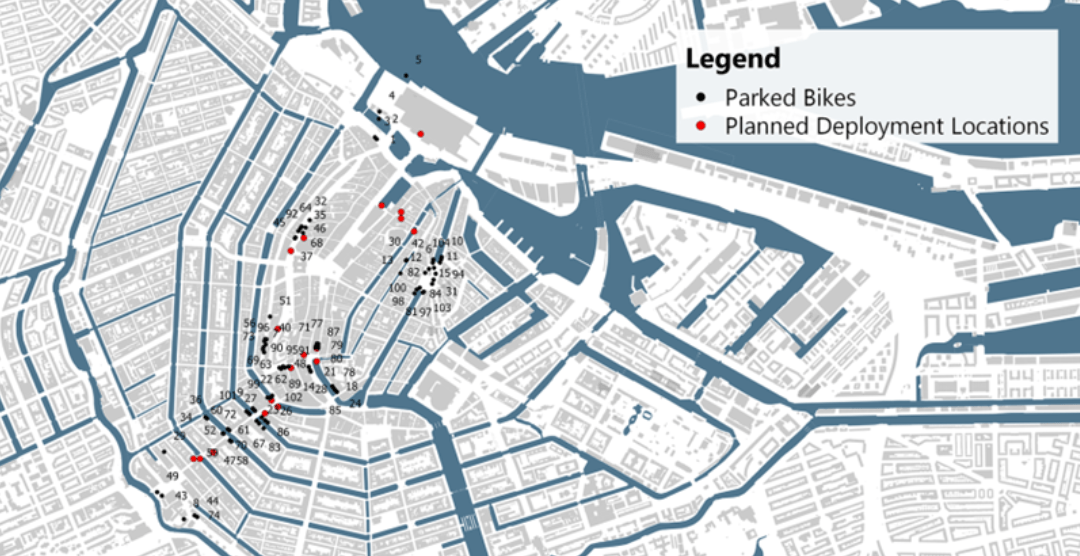
Planned deployment and realised parking locations of the 100 bikes
However, this information tells us very little about other interesting aspects of this issue, such as the fate of stolen bicycles, the intricacies of their theft network, and, more broadly, their destination once stolen.
Within the framework of the MIT Senseable Amsterdam Laboratory's research, it is shown that the use of digital technologies enables a more in-depth analysis of specific crimes across time and space. To address the question regarding the destination of stolen bicycles, the MIT SAL designed an unprecedented, yet very straightforward methodology by strategically placing 100 securely locked bicycles, each equipped with location sensors, in main bicycle theft hotspots in Amsterdam. Subsequently, the Laboratory closely monitored the movements and whereabouts of these traceable bikes.
Between 1 June and 30 November 2021, the 100 deployed bicycles were meticulously tracked. During this timeframe, 70 of them were classified as stolen. Each of the 70 stolen bicycles provided a unique insight into the dynamics of bicycle theft, gradually unveiling the spatial and temporal patterns of such crimes in Amsterdam.
Where do our stolen bikes go?
Through this method, the MIT SAL created a promising dataset detailing the movements of stolen bicycles. This dataset, however, comes with the challenge of determining the most effective analyses to extract information from it: from simple exploratory plots to hierarchical clustering and graph-based analyses, the MIT SAL’s work encompassed various analytical approaches and techniques.
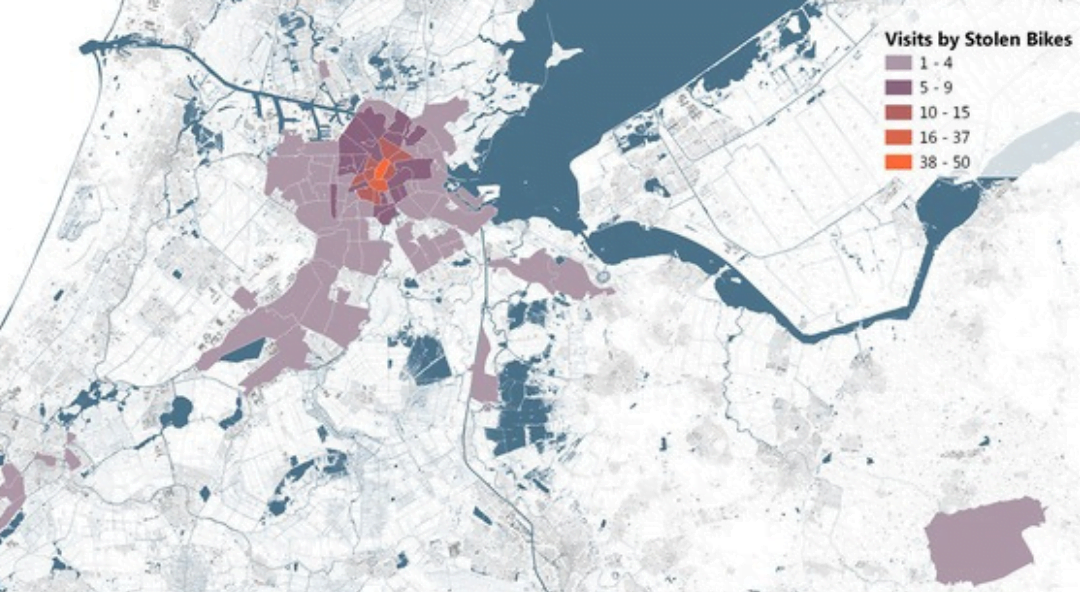
Visits of stolen bikes to 4-digit postal code
Our analyses have revealed that stolen bicycles typically spend a relatively brief period in purloined status before swiftly returning to regular usage within the city. They also do not travel very far: most remain in close proximity to Amsterdam, almost as if they were part of a circular economy of stolen goods.
This observation stands in stark contrast to numerous theories encountered in the MIT SAL literature review for the research article ‘Tracking stolen bikes in Amsterdam’, which suggested cross-city and cross-country transport of stolen bicycles.
Furthermore, by employing graph-based network analyses, the research could identify storage locations and travel patterns that would not occur randomly: hence, the deduction is that approximately 30% of the stolen bicycles are stolen in an organised way, while the remaining 70% follows patterns that indicate a swift resale or immediate integration into regular use.
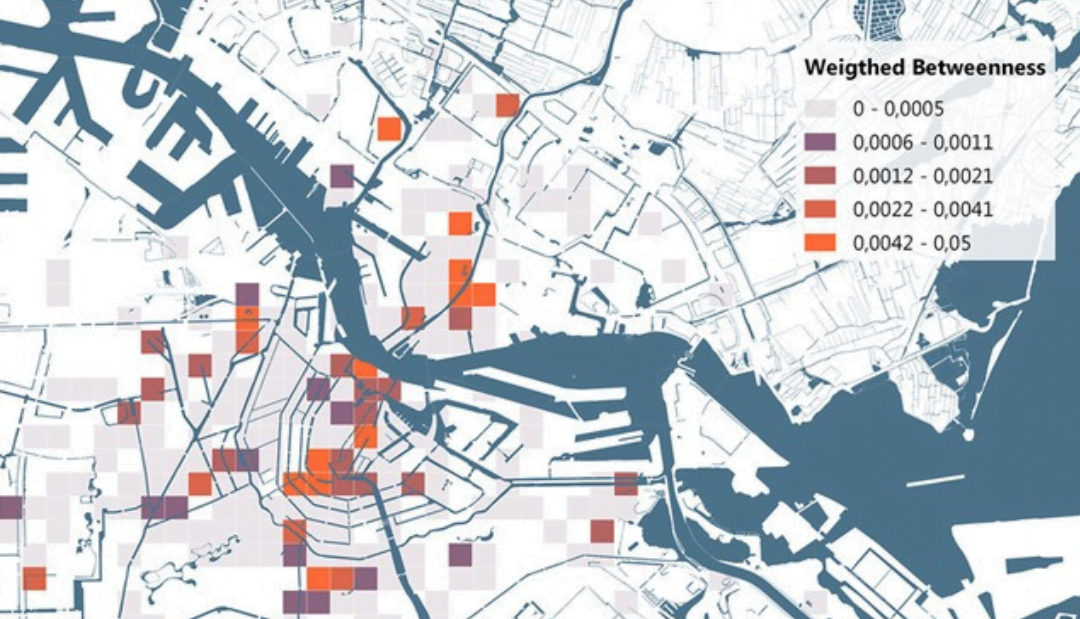
Areas with few functions and amenities but high importance for the movement of stolen bikes
The approach of the MIT SAL contributes to the advancement of urban criminology literature by leveraging ubiquitous sensing technologies, thus offering a wealth of detailed spatial and temporal information about bicycle theft, human mobility patterns, and explanatory variables that transcend conventional socio-demographic neighbourhood analyses.
With the rise of bicycles in cities going hand in hand with the surge of theft, tracking technology can be a great asset to increase safety, inform policymaking, and shape law enforcement strategies and practices on a global scale.
The integration of affordable and readily available digital technologies enables new research into this field and can provide municipalities with opportunities to reduce crime rates while pursuing an active and clean transport agenda.
Click here to read the article in its original format.
About the authors:
Titus Venverloo leads the MIT Senseable Amsterdam Laboratory, a research initiative between the Massachusetts Institute of Technology and AMS Institute. Venverloo has an interdisciplinary background in urban engineering and technology.
Fábio Duarte is a lecturer at MIT, Head of Research Initiatives in the Center for Real Estate, and Principal Research Scientist at the MIT Senseable City Lab. He has a background in urban planning and a PhD in communication and technology from the Universidade de São Paulo, Brazil.
